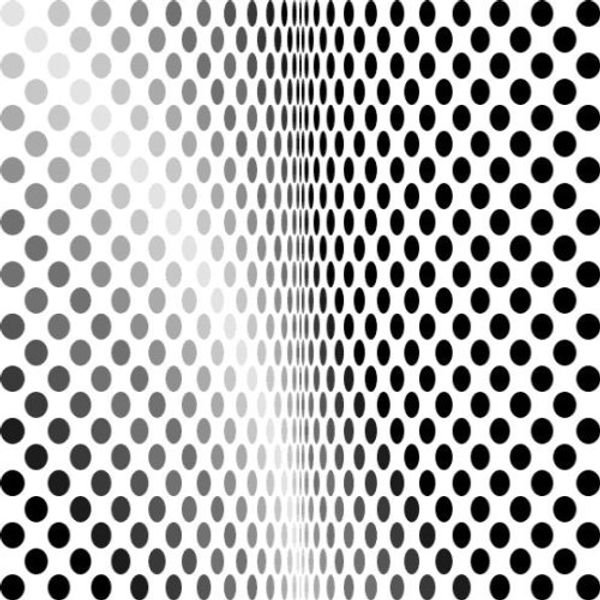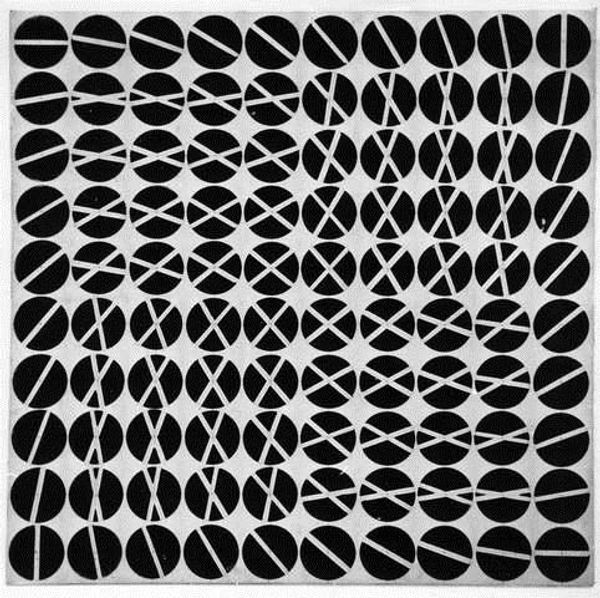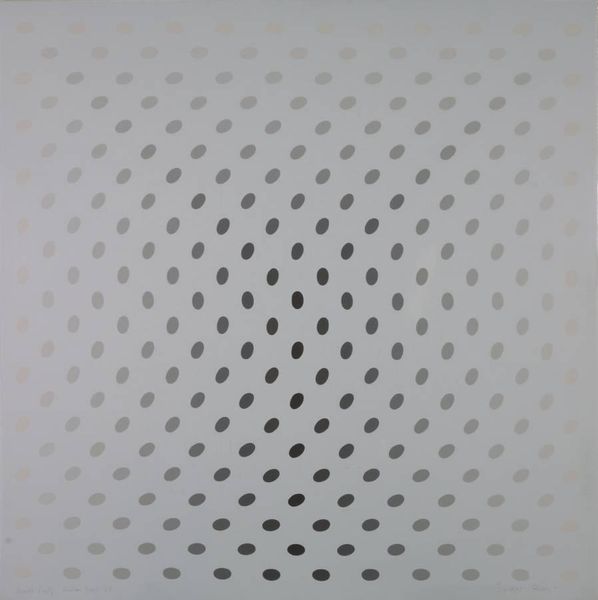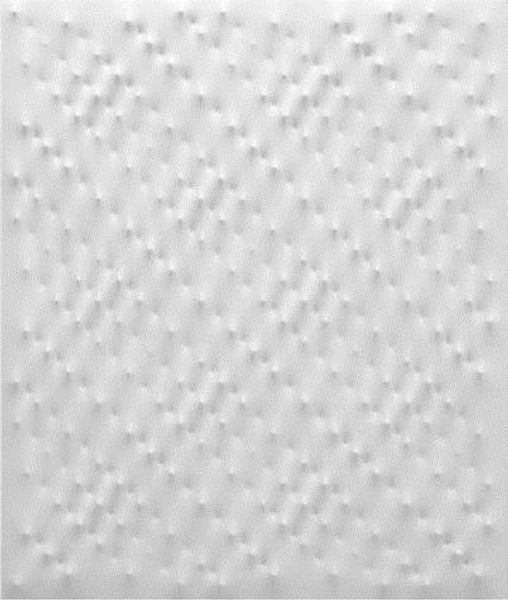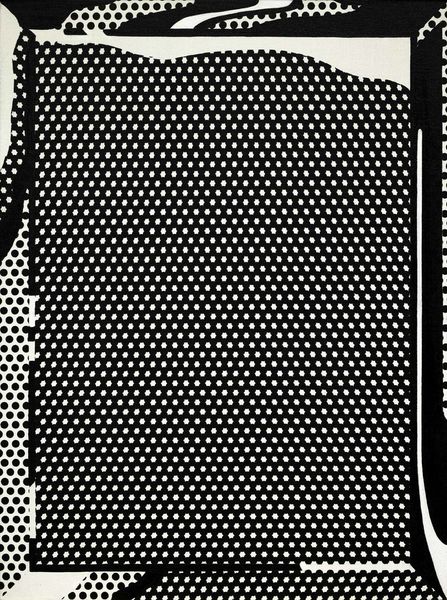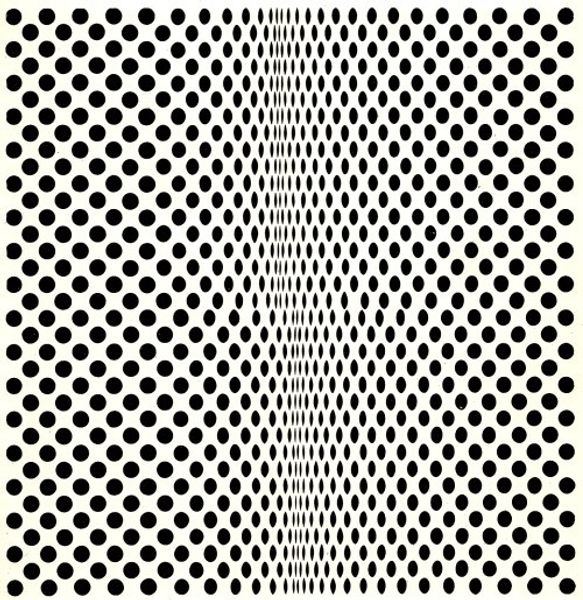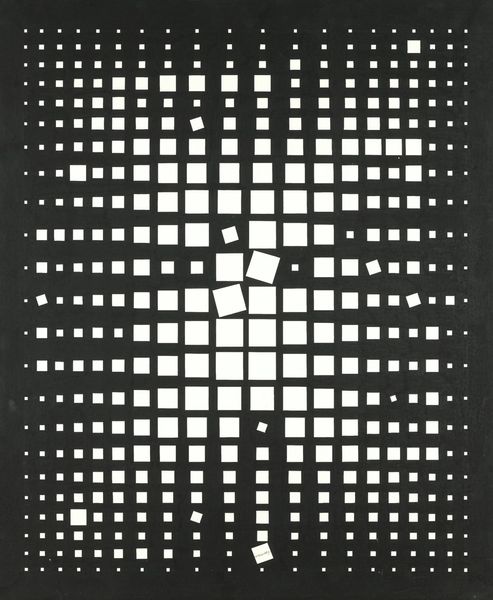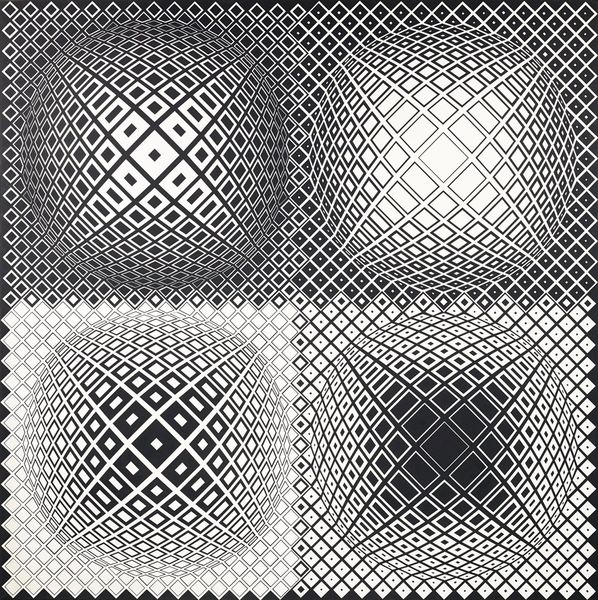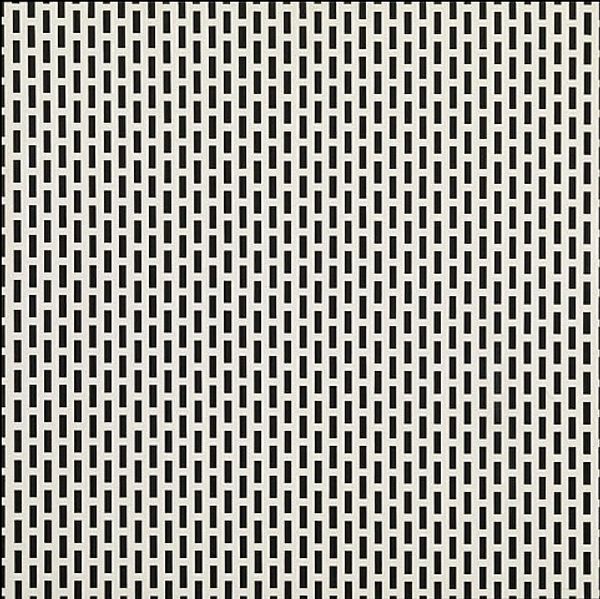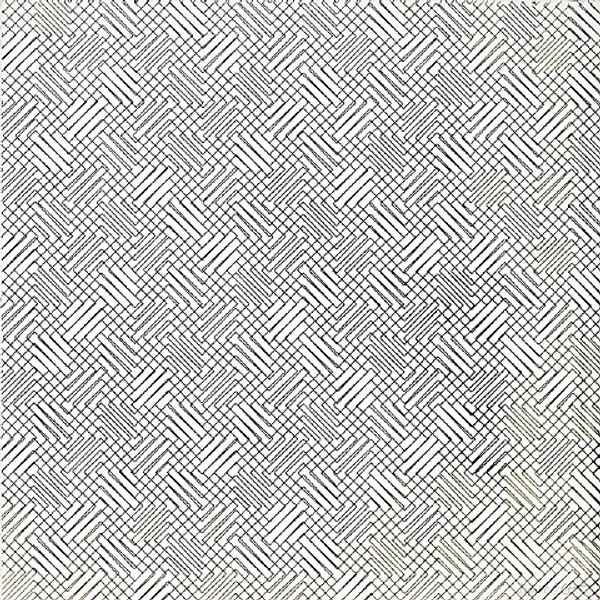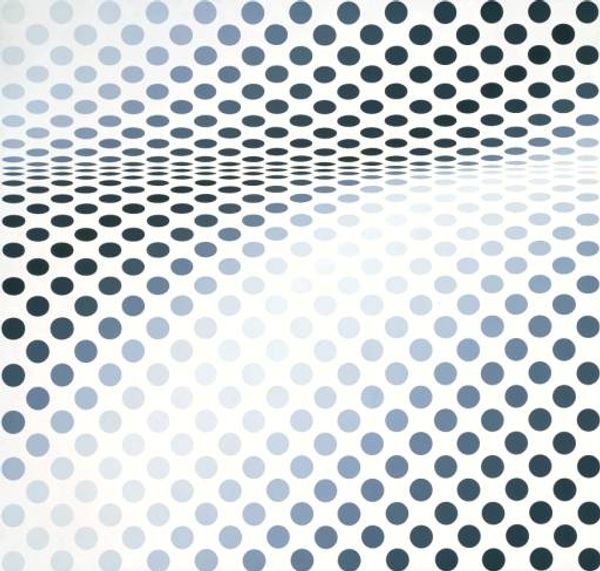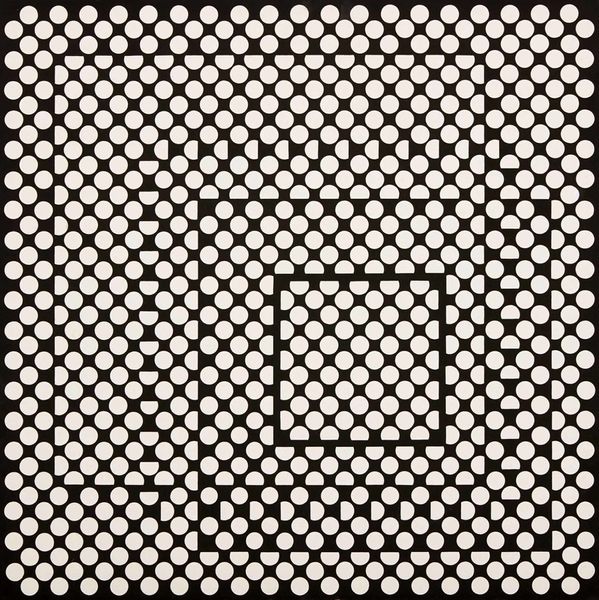
acrylic-paint
#
op-art
#
pattern
#
acrylic-paint
#
geometric pattern
#
abstract pattern
#
repetitive shape and pattern
#
minimal pattern
#
organic pattern
#
geometric
#
repetition of pattern
#
vertical pattern
#
abstraction
#
line
#
pattern repetition
#
combined pattern
#
repetitive pattern
Copyright: Bridget Riley,Fair Use
Curator: This is Bridget Riley's "Pause," an acrylic on canvas work from 1964. Editor: My first impression? It's incredibly disorienting. It's like the ground is giving way beneath your feet, or the air is shimmering intensely from the heat. There is definitely a sensation of movement. Curator: Exactly. Riley is known for her Op Art, short for Optical Art, which utilizes geometric patterns to create visual illusions. She played with perception in a way that challenged established artistic conventions. This piece perfectly exemplifies that experimentation. Editor: Absolutely. The strategic use of black, white, and gradations of grey to structure this dotted grid pattern almost tricks the eye. It almost seems that the grid subtly bends inwards on the right. One cannot help but associate the circle with themes of wholeness, cycles, or the all-seeing eye of divinity or control. It’s almost overwhelming. Curator: It's fascinating to consider Riley’s intentions at the time. The 1960s were marked by profound social and political changes. The art world was not unaffected and experimented with this desire for perceptual shifts. How might "Pause," as a work of abstraction, engage with that period of great tension and change? Editor: I see that reflected. The illusion could perhaps be seen to reflect our collective need to find pause and stillness amidst overwhelming stimulation and noise. Curator: A radical and bold notion when you consider it, especially against the backdrop of conventional painting. It essentially rejects representation in favor of pure sensory experience. And by calling it "Pause," she is subtly prompting the viewer to slow down, to consider perception, almost like a form of protest in a society on the verge of enormous transformation. Editor: And it seems like a very poignant message today. It reminds us of the power of symbols, abstraction, and repetitive figures in providing meaning. Curator: Agreed. Riley's exploration of visual perception through simple forms reveals that art can go beyond representation, it can tap into the psychology of how we see. Editor: A timely insight for me too. Art isn’t simply about aesthetics, but a conversation about how visual experience, memory, and cultural continuity function and can change.
Comments
No comments
Be the first to comment and join the conversation on the ultimate creative platform.
